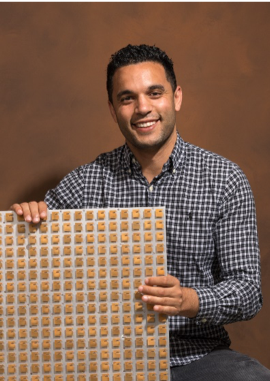Ottawa AP/MTT: Spacecraft Antennas for Earth Science and Planetary Exploration Missions

Recent progress in antenna design and propagation modelling for Space Exploration will be discussed and illustrated through a wide range of successful NASA missions. NASA’s Jet Propulsion Laboratory has significantly contributed to the rapid growth of CubeSat antennas with the development of very innovative deployable antennas at X- and Ka-band. The Mars CubeSat One (MarCO) was enabled by a deployable X-band reflectarray that successfully transmitted back to Earth critical data from Insight during its Entry Descent and Landing (EDL) phase. A deployable Ka-band mesh reflector was developed for Raincube, the first radar in a CubeSat, which after a successful deployment on-orbit, is currently collecting precious precipitation data all over the globe.
NASA’s Jet Propulsion Laboratory has developed the first Mars helicopter: Mars Ingenuity. The helicopter has the capability to transmit to and receive data from a Mars Rover located at a distance ranging up to 1km. The antenna designs and propagation on the Mars surface will be addressed in this talk. Finally, a new type of dual-band circularly polarized X-band telecommunication antenna is under development for the potential Europa Lander whose goal is to find life on the icy moon of Jupiter, Europa. This antenna needs to survive cryogenic temperature and extreme radiation level while being completely flat and entirely made of metal.
This wide overview of missions and antenna developments aims at showing the different challenges antenna engineers have to face while designing antennas for space exploration.
Zoom info in the location section
Date and Time
Location
Hosts
Registration
-
 Add Event to Calendar
Add Event to Calendar
Loading virtual attendance info...
Speakers
 Dr. Nacer Chahat of NASA JPL
Dr. Nacer Chahat of NASA JPL
Spacecraft Antennas for Earth Science and Planetary Exploration Missions
Biography:
Nacer Chahat received the Master’s degree in electrical engineering from the Ecole Supérieur d’ingénieurs de Rennes (ESIR), Rennes, France, in 2009; the Master’s degree in telecommunication and the Ph.D. degree in signal processing and telecommunications from the Institute of Electronics and Telecommunications of Rennes (IETR), University of Rennes 1, Rennes, France, in 2009 and 2012, respectively. He is a Senior Antenna/Microwave Engineer with the National Aeronautics and Space Administration (NASA) Jet Propulsion Laboratory (JPL), California Institute of Technology, Pasadena, CA. Since 2013, he has been a Microwave/Antenna Engineer with NASA’s Jet Propulsion Laboratory and he has been Technical Section Staff and Product Delivery Manager since 2017. He has authored and coauthored more than 100 technical journal articles and conference papers, has written four book chapters, and also holds several patents. He also wrote the textbook entitled “CubeSat Antenna Designs” published by Wiley describing all of his innovative work on CubeSat antennas developed at JPL. He has developed key antenna technologies enabling new types of mission for Deep Space Exploration. He is co-inventor of the iconic deployable reflectarray used on the Mars Cube One (MarCO) mission, the world’s first interplanetary CubeSat. He also co-invented the award-winning Raincube mesh reflector antenna used on the first active radar on a CubeSat. He also invented the Europa Lander antenna enabling direct communication from the surface of Europa (600 million km away), capable of surviving the harsh environment of icy moon of Jupiter.
Dr. Chahat was the recipient of the 2011 CST University Publication Award, the 2011 Best Paper Award from the Bioelectromegnetics Society, and the IEEE Antenna and Propagation Society Doctoral Research Award in 2012. He was awarded by Foundation of Rennes 1, Best Ph.D. of University of Rennes. In 2013, he received the Best Ph.D. thesis in France in electrical engineering awarded by club EEA. In 2013, he was awarded the Airbus Group Foundation’s Best Thesis Prize in France. In 2015, he received a French Early Career Award for Researchers (Prix Bretagne Jeune Chercheur) for his significant scientific contribution in his early career. In 2017, he received the IEEE A. Schelkunoff Transactions Prize Paper Award. In 2017, he also received the prestigious Lew Allen Award for Excellence awarded by NASA’s Jet Propulsion Laboratory “for demonstrated unique talent as a leader in rapid spacecraft antenna development and telecom systems engineering”. In 2018, he was awarded the Future Technology Leader Award by the Engineers’ Council and the NASA Early Career Achievement Medal Award. In 2020, he received the IEEE Outstanding Engineer of the Year from IEEE Region 6.

